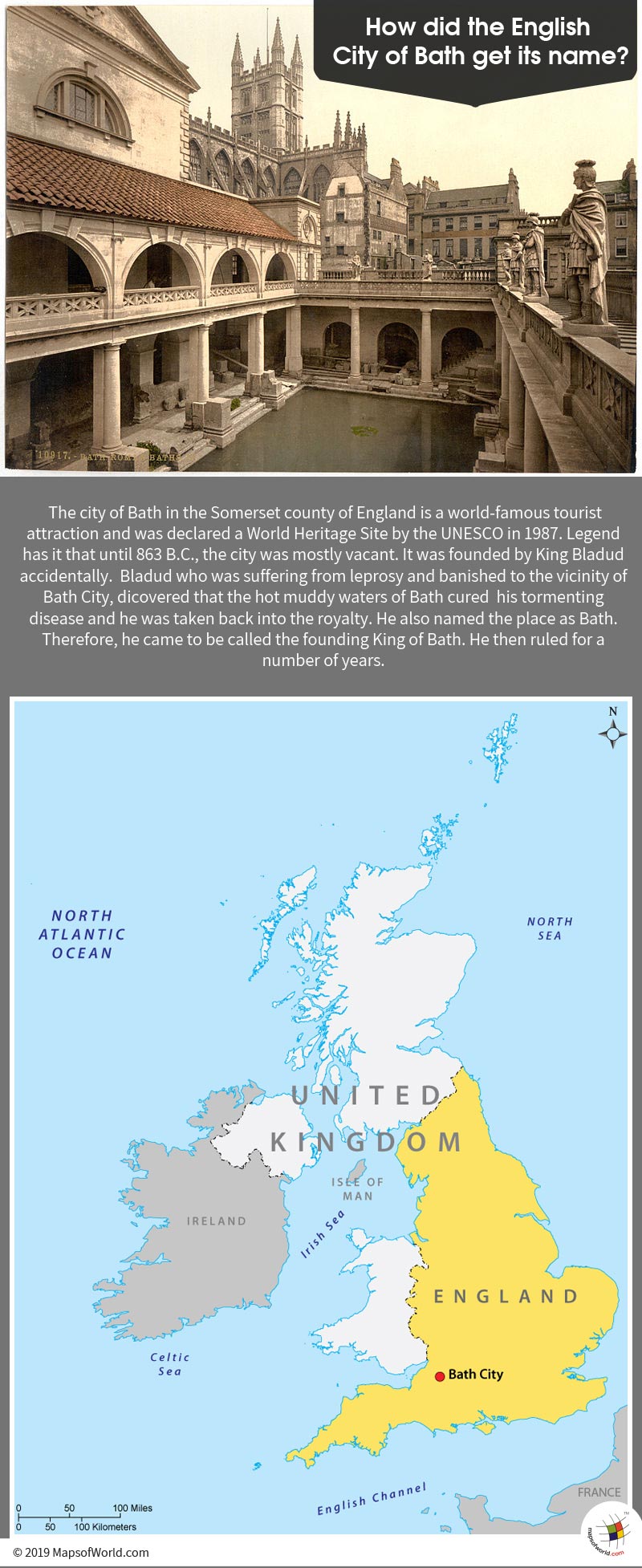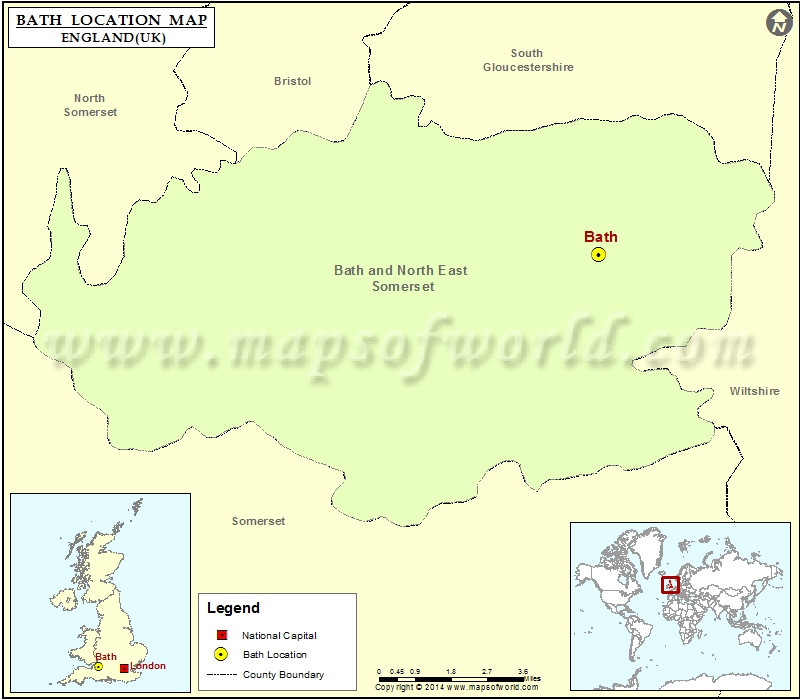How Did the English City of Bath Get Its Name?

The city of Bath in the Somerset county of England lies 156 km (97 miles) to the west of London, and is a world-famous tourist attraction. Declared a World Heritage Site by the UNESCO in 1987, it has a lot to offer to its visitors with Roman remains and imposing architecture. It derives its name and worldwide fame for its Roman Baths, built in the 1st-century A.D. after the invasion of Romans. These were built around the hot spring which naturally rises to temperatures as high as 46°C. Between the 1st and the 5th century, these baths were at the center of life for Romans. The visit to the city is incomplete if you don’t taste the waters and sit back & relax with coffee and snacks in the Pump Room, the main center of entertainment in the 18th century. The city also has amazing restaurants, numerous museums, a plethora of theatres and shopping centers.
The Story behind Its Name
Legend has it that until 863 B.C., the city was mostly vacant. It was founded by King Bladud accidentally. He was the next-in-line heir to the British throne. Unfortunately, he contracted leprosy. His disfigurement resulted in his banishment from the courts. He was then forced to move to the vicinity of the Bath city and herd swine to earn his living. Bladud then made a surprising observation about the swines. He noticed that swines who did not stroll near the steaming mud of the baths were covered in hideous marks and other imperfections, while those who rolled around in the muds had blemish-free immaculate skin. Following his intuition, he himself took a bath in the hot muddy waters and got cured of his tormenting disease. Later, he was taken back into the royalty. He also named the place as Bath. Therefore, he came to be called the founding King of Bath. He then ruled for a number of years.
When was a Bath Complex Built at the Site?
The ancient bath complex in the city includes a sacred spring, a former public bathing house-cum-spa, a Roman temple, and a museum. The hot water here springs from limestone aquifers below the earth’s crust. The water collected in the aquifers gets heated due to the geothermal energy, and then rises up through the faults in the limestone as a hot water spring. Historical evidence suggests that in Celtic times, the site may been been dedicated to the worship of goddess Sulis. Romans invaded parts of Great Britain in possibly 43 A.D., and kept expanding their territory to occupy the whole of Great Britain and Wales up to 410 A.D. After its conquest by Romans in the 1st-century A.D., the name of the town was adopted as Aquae Sulis, and the hot water spring was enclosed to build a public bathing house. A temple to the goddess Sulis was also built overlooking the bath. After the withdrawal of Romans, the bathing house lay neglected for some time, after which it was intermittently revived by various architects over the next few centuries.
The Alluring Architecture of Bath
Thus, the beautiful city of Bath has been a tourist destination from Roman times. Now built for relaxation and pleasure, the waters are still the main point of interest in the city. The modern Thermae Bath Spa, and the ancient Roman Baths, both have natural thermal hot springs and are very popular.
The city has an amazing architecture, visible from its honey-colored Georgian buildings and design. Its major highlights are the majestic Circus and the Royal Crescent.
Pulteney Bridge is one of the city’s most famous landmarks. It is one of the two bridges in entire Europe which supports shops. Modeled on Florence’s Ponte Vecchio, this was built by the iconic architect Robert Adam in 1770. Restaurants and small specialist shops are in abundance here. One can also get gorgeous panoramic views of the city via frequent boat trips.
However, Beckford’s Tower is the front runner for the title of the most eccentric landmark of the city. Built in the early 19th century, it is enclosed by a Victorian cemetery. It houses a museum at the base of the Tower and is also open to tourists. Climbing over 150 steps on the alluring spiral staircase, one can get stunning views of the city from the building.
Moreover, the city is visitor-friendly. Its compact center is filled with the distinct shops in Britain, and multiple eateries, making it a perfect leisure spot. The city is also a land where festivals are organized the whole year round. There are also numerous galleries, museums, and theaters. With so much to see, it is a perfect treat in today’s times.
Related Links:
- How did London Get its Name?
- What is the difference between United Kingdom, England and Great Britain?




